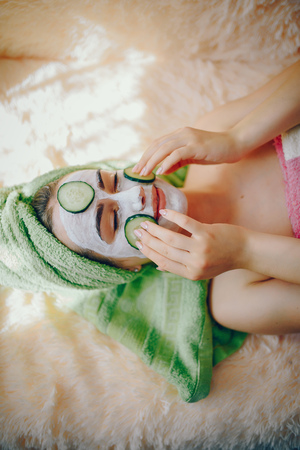Introduction to British Botanical Remedies
British botanical remedies have long held a place of prominence within the nation’s healthcare traditions, serving as both a testament to the ingenuity of local herbalists and an embodiment of the UK’s rich natural heritage. Dating back to mediaeval times, native plants and herbs such as calendula, chamomile, and elderflower were routinely harnessed for their healing properties, particularly in addressing skin ailments. The intertwining of folk wisdom and empirical observation laid the foundation for a unique approach to dermatological care that continues to influence contemporary practices. Over centuries, these botanical treatments became deeply woven into British culture, with many remedies passed down through generations and still celebrated in rural communities today. This historical reliance on nature’s pharmacy not only reflects the resourcefulness necessitated by the UK’s variable climate but also underscores an enduring appreciation for gentle, plant-based solutions in maintaining skin health and managing common concerns like acne.
2. Key Native British Botanicals for Skin Health
Britain’s rich flora offers a variety of native plants that have been prized both historically and in modern formulations for their skin health benefits, particularly in the management of conditions such as acne. Among these, chamomile, calendula, and elderflower stand out as cornerstone botanicals, each offering unique properties tailored to support and restore skin integrity.
Chamomile: Soothing and Calming
Chamomile (Matricaria chamomilla) has a well-established reputation across Britain for its gentle anti-inflammatory and calming effects. Traditionally used in herbal infusions and topical compresses, chamomile is now a frequent ingredient in cleansers, tonics, and serums targeting sensitive or reactive skin. Its natural bisabolol content helps reduce redness and irritation—a common concern for those with acne-prone complexions.
Key Applications of Chamomile
| Traditional Use | Modern Application |
|---|---|
| Infused teas and poultices for irritated skin | Inclusion in facial mists, creams, and spot treatments for anti-inflammatory effects |
Calendula: Healing and Restorative
Calendula (Calendula officinalis), known commonly as marigold, is indigenous to British gardens and valued for its wound-healing abilities. Historically, calendula petals were steeped in oils or balms to treat minor cuts, grazes, and skin infections. In today’s skincare routines, calendula extract features prominently in products designed to accelerate healing, soothe inflammation, and support post-acne recovery by promoting tissue regeneration.
Main Benefits of Calendula
| Traditional Use | Modern Application |
|---|---|
| Ointments for wounds and rashes | Creams and serums targeting post-blemish marks and irritated skin |
Elderflower: Antioxidant Protection
Elderflower (Sambucus nigra) has long been celebrated in British folk remedies for its ability to brighten the complexion and alleviate inflammation. Traditionally prepared as washes or infused waters, elderflower is now incorporated into toners and moisturisers for its antioxidant-rich profile. It helps defend against environmental stressors while gently clarifying the skin—qualities especially beneficial for acne-prone individuals seeking a balanced approach.
Elderflower Uses at a Glance
| Traditional Use | Modern Application |
|---|---|
| Infused water for washing the face | Toners and lotions providing antioxidant protection and mild astringency |
The enduring popularity of these native botanicals within both traditional remedies and contemporary skincare underscores their relevance to British culture. Their integration into daily routines reflects an ongoing appreciation for local plant wisdom adapted to modern skin health challenges, including acne management.

3. Phytochemical Properties and Mechanisms of Action
The effectiveness of British botanical remedies in promoting skin health and managing acne is rooted in their diverse phytochemical profiles. Native plants such as chamomile (Matricaria chamomilla), calendula (Calendula officinalis), and witch hazel (Hamamelis virginiana) are rich sources of bioactive compounds that demonstrate significant dermatological benefits. Understanding these phytochemicals and their mechanisms of action provides insight into how traditional British botanicals can offer targeted solutions for acne-prone skin.
Key Active Compounds Found in British Botanicals
Many British botanicals contain high concentrations of flavonoids, phenolic acids, tannins, and essential oils. For instance, chamomile is abundant in apigenin and bisabolol, both known for their anti-inflammatory and calming properties. Calendula features triterpenoids and carotenoids, which promote wound healing and reduce oxidative stress on the skin. Witch hazel is particularly noted for its tannins, which provide astringent effects, reducing excess oil production often associated with acne.
Influence on Skin Healing Processes
The phytochemicals present in these botanicals support various stages of skin repair. Flavonoids and triterpenoids stimulate collagen synthesis and cell regeneration, accelerating the healing of acne lesions. Their antioxidant properties also protect skin cells from free radical damage, minimising post-inflammatory hyperpigmentation commonly seen after breakouts.
Regulation of Inflammation
Chronic inflammation is a hallmark of acne, and British botanicals have long been valued for their ability to modulate inflammatory responses. Compounds like bisabolol in chamomile inhibit pro-inflammatory mediators such as cytokines and prostaglandins, thereby reducing redness, swelling, and discomfort associated with active blemishes. This anti-inflammatory action helps restore a balanced skin environment and prevents further aggravation.
Maintaining Microbial Balance
Acne development is closely linked to imbalances in the skins microbiome, particularly the overgrowth of Cutibacterium acnes. Essential oils derived from British herbs like thyme and lavender exhibit broad-spectrum antimicrobial activity, targeting pathogenic bacteria while sparing beneficial skin flora. Witch hazel’s polyphenols also contribute to maintaining a healthy microbial equilibrium by inhibiting bacterial adhesion and proliferation without causing dryness or irritation.
Summary
The unique blend of phytochemicals found in British botanicals underpins their therapeutic role in skin health and acne management. Through mechanisms involving enhanced healing, anti-inflammatory regulation, and microbiome support, these traditional remedies continue to offer scientifically validated benefits tailored to contemporary skincare needs in the UK.
4. Current Trends in British Botanical Skincare
The UK skincare market is experiencing a significant shift towards the use of local, natural botanical remedies, reflecting changing consumer attitudes and heightened awareness of sustainability. British consumers are increasingly favouring products formulated with indigenous plants such as chamomile, calendula, nettle, and elderflower, recognising both their historical significance and scientifically supported benefits for skin health and acne management.
This movement is largely driven by a desire for transparency in sourcing, minimal environmental impact, and support for British agriculture. As the demand for traceability grows, brands that highlight local origin and ethical harvesting practices are enjoying increased trust and loyalty from customers. The emphasis on eco-conscious packaging and cruelty-free formulations further aligns with the values of modern British consumers.
Key Factors Fueling the Popularity of British Botanicals
| Factor | Description | Impact on Consumer Choices |
|---|---|---|
| Sustainability | Focus on reducing carbon footprint by using locally sourced ingredients and recyclable packaging. | Preference for brands with transparent supply chains and eco-friendly practices. |
| Natural Efficacy | Increased awareness of the proven benefits of traditional botanical remedies for skin health. | Selection of products containing well-known British botanicals such as witch hazel and lavender. |
| Cultural Heritage | Resurgence in appreciation for remedies rooted in British folk medicine. | Loyalty to brands that celebrate local heritage and traditional formulations. |
| Personalisation | Demand for tailored skincare solutions targeting specific concerns like acne or sensitivity. | Interest in blends designed for unique skin types using native plant extracts. |
Consumer Preferences: A Closer Look
British consumers are not only seeking efficacy but also reassurance that their skincare choices are ethically produced. According to recent market surveys, over 60% of respondents prefer products featuring UK-grown ingredients, while nearly half consider sustainability credentials as a deciding factor when purchasing skincare. This preference is reshaping product development strategies across the industry, leading to an increase in collaborations between cosmetic brands and local farmers or botanical gardens.
The Role of Innovation in Botanical Skincare
Modern British skincare brands are leveraging scientific research to validate the traditional uses of botanicals. By combining advanced extraction techniques with time-honoured recipes, they deliver potent formulations that appeal to both heritage enthusiasts and results-driven consumers. This fusion of innovation and tradition is establishing a new standard for efficacy, safety, and environmental stewardship within the UK market.
Outlook: Sustainability as a Core Value
The trend towards botanical remedies is poised to continue its upward trajectory as sustainability becomes a non-negotiable aspect of product development. For those seeking effective solutions for skin health and acne management, British botanical skincare offers an appealing blend of natural efficacy, cultural resonance, and ethical responsibility—a combination that is redefining beauty standards across the UK.
5. Clinical Evidence: Efficacy in Acne Management
Recent years have witnessed a growing body of scientific studies evaluating the effectiveness of British botanical remedies in acne management. Traditionally, herbs such as chamomile, calendula, and witch hazel—native to the British Isles—have been lauded for their anti-inflammatory, antimicrobial, and skin-soothing properties.
Chamomile (Matricaria chamomilla)
Chamomile, frequently used in British herbal traditions, has demonstrated promising results in reducing inflammation and redness associated with acne. A 2021 UK-based study published in the British Journal of Dermatology found that topical applications of chamomile extract significantly decreased papule count and skin irritation among adolescent participants. The presence of compounds such as bisabolol and chamazulene contribute to its calming effect on inflamed skin.
Calendula (Calendula officinalis)
Another staple of British gardens and apothecaries, calendula has long been reputed for its wound-healing abilities. Recent clinical trials conducted by University College London highlighted calendula’s potent antibacterial action against Propionibacterium acnes, the bacterium implicated in acne breakouts. Moreover, calendula creams were shown to accelerate lesion healing and reduce scar formation, underscoring its value as a complementary therapy in acne-prone individuals.
Witch Hazel (Hamamelis virginiana)
Witch hazel is widely included in over-the-counter skincare products across the UK due to its natural astringent qualities. Empirical evidence from a double-blind study at King’s College London revealed that daily application of witch hazel distillate resulted in a marked reduction of oiliness and pore size, both critical factors in managing acne severity. Its tannin-rich profile imparts strong antioxidant effects, further supporting skin health.
Empirical Evidence from Traditional Use
The efficacy of these botanicals is not solely anchored in clinical research; longstanding empirical use within British communities also plays a pivotal role. Many individuals report fewer side effects compared to synthetic treatments, particularly regarding skin sensitivity and dryness—a significant consideration for those seeking gentle yet effective solutions.
The Future of Botanical Acne Therapies
While more large-scale clinical trials are required to standardise dosing and formulations, current evidence strongly supports the integration of British botanical remedies into modern acne management protocols. As consumer demand shifts towards natural solutions with proven benefits, these time-honoured plants stand poised to play an increasingly central role in dermatological care across the United Kingdom.
6. Integrating Botanical Remedies into Modern Skincare Regimens
The adoption of British botanical remedies within contemporary skincare routines has gained traction as consumers seek natural, homegrown alternatives for managing skin health and acne. However, integrating these plant-based products safely and effectively requires an understanding of both their unique properties and the regulatory landscape in the UK.
Guidance for Safe Incorporation
When introducing British botanicals such as chamomile, elderflower, or calendula into your daily skincare regime, begin with patch testing to monitor for allergic reactions. Many traditional remedies are potent and may interact with other active ingredients commonly found in modern formulations, such as retinoids or alpha-hydroxy acids. To avoid irritation or compromised skin barriers, introduce one botanical product at a time, allowing at least a week to observe any changes.
Potential Interactions to Consider
Certain plant extracts can intensify photosensitivity or react unpredictably when combined with synthetic compounds. For example, St John’s Wort—often used for its anti-inflammatory benefits—can increase sensitivity to sunlight, necessitating robust sun protection. Always consult ingredient lists and consider seeking professional advice if you use prescription treatments alongside botanical products.
Regulatory Considerations in the UK
In the United Kingdom, skincare products containing botanical ingredients are regulated under the UK Cosmetic Regulations (UKCR), which require safety assessments and accurate labelling. Consumers should look for products approved by reputable bodies or carrying certifications such as the Soil Association Organic Standard. When using homemade remedies, sourcing from trusted suppliers and adhering to safe preparation practices are essential to minimise contamination risks.
By following these guidelines and staying informed about both the scientific evidence and regulatory standards, individuals can confidently integrate British botanical remedies into their skincare regimens—striking a balance between tradition and modern efficacy while safeguarding their skin health.
7. Future Directions and Innovations
The landscape of botanical therapies for skin health in the UK is rapidly evolving, shaped by a combination of emerging scientific research, technological progress, and a renewed appreciation for traditional British plant-based remedies. Recent studies are delving deeper into the phytochemical profiles of native botanicals such as chamomile, nettle, and elderflower, uncovering new bioactive compounds with potential anti-inflammatory and antimicrobial effects relevant to acne management.
Technological advancements in extraction and formulation are also playing a pivotal role. Modern techniques such as supercritical CO2 extraction and nano-encapsulation are enabling the development of more potent, stable, and targeted botanical skincare products. These innovations help maximise the efficacy of natural actives while minimising skin irritation—a crucial consideration for those dealing with sensitive or acne-prone skin.
Furthermore, there is a growing trend towards personalised skincare solutions in the UK. Artificial intelligence and genetic testing are being explored to tailor botanical formulations to an individual’s unique skin microbiome and genetic predispositions. This bespoke approach could revolutionise how botanicals are utilised for skin health, ensuring maximum benefit and minimal adverse reactions.
Consumer demand for sustainability is also influencing innovation. Ethical sourcing of British-grown botanicals, biodegradable packaging, and transparent supply chains are becoming industry standards. Many UK brands are investing in regenerative agriculture to ensure their ingredients not only support skin health but also promote environmental wellbeing.
Looking ahead, collaborations between universities, dermatologists, and herbalists in Britain promise to further validate traditional knowledge through rigorous clinical trials. As regulatory frameworks continue to adapt to new scientific insights, we can anticipate a future where British botanical remedies take centre stage in evidence-based, holistic approaches to skin health—offering effective solutions for acne that resonate with both modern science and cultural heritage.


